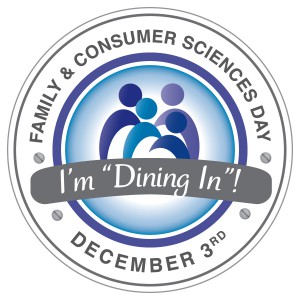
by Laurie Osgood | Jun 7, 2019
 What is Stress Anyway?
What is Stress Anyway?
The traffic is awful, a report is due, the laundry is piling up, and the kids are fighting. Life is full of stress! According to the National Institute of Mental Health, stress is how the brain and body respond to any physical, mental, and/or emotional demand. Not all stress is bad. For example, stress can help motivate us to get things done. When faced with a threat or stressful event, our bodies produce hormones such as epinephrine, which can cause a temporary rise in our heart rate and blood pressure. Chronic, un-managed stress can cause long-term symptoms including headaches, high blood pressure and even problems sleeping.
Identify the Sources of Stress in Your Life
Feeling stressed is normal, but some people cope with stress better than others. Our thoughts, lifestyle and emotions can affect how much stress we endure. We must identify the causes of our stress before we can begin to manage them. Although the causes of stress are similar for both men and women, it is how we recognize and manage our stress that makes us different.
Common Causes of Stress:
• Work or unemployment
• Money, finances
• Drug or alcohol abuse
• Family breakdown
• Health issues
• Major life changes
What are the Symptoms of Stress?
Our bodies automatically respond to stressors in our lives. However, constant and uncontrolled stress can lead to serious physical and mental consequences. No matter how stressful your life seems, we must recognize the warning signs of stress and take action.
Watch out for the following warning signs:
• Feeling tired, not sleeping properly
• Loss of concentration and an inability to complete projects
• Irritability, low self-esteem or mood swings
• Feeling tense or anxious
• Feeling unmotivated
• Withdrawing from family and friends
• Excessive drinking and/or drug use
• Physical signs such as headaches, chest pains, high blood pressure, digestive problems or aches and pains
Men and Woman Handle Stress Differently
How stress affects you may depend upon your gender. Men and women recognize and react to stress in different ways, both mentally and physically.
When feeling stressed, women reach out to friends and family. They seek support to lower their stress and find a solution to their challenges. By talking about their emotions, women are able to process their feelings and share the pressure of their situation.
When men experience stressful situations, they are likely to hide their feelings or change the subject to escape a stressful situation. Men find it hard to talk about their feelings or ask for help when faced with pressures from their job, family issues or money worries. Men prefer to play sports or listen to music to manage stress.
Stress Reduction Strategies for Men and Women
Stress is a normal part of life, but chronic stress can be bad for our health. Stress management means taking control of your thoughts, emotions, and lifestyle. Making simple changes in your life such as maintaining a network of close friends, exercising, eating a healthy diet, and getting enough sleep can help reduce your overall stress.
Resources:
The American Psychological Association: https://www.apa.org/news/press/releases/stress/2010/gender-stress
The National Institute of Mental Health: https://www.nimh.nih.gov/health/publications/stress/index.shtml
The Electronic Data Information Source of UF/IFAS Extension. EDIS: https://edis.ifas.ufl.edu/pdffiles/FY/FY51700.pdf
To learn more about how to cope with stress, contact Laurie Osgood, Family and Consumer Sciences Agent at the UF/IFAS Extension Office in Gadsden County (850) 875-7255 or Osgoodlb@ufl.edu


by Amy Mullins, PhD, RDN | Feb 11, 2019

Make SMART changes for your health. Photo credit: UF/IFAS Northwest District
“New Year, New Me!” – the same phrase we hear and see posted all over social media every time the new year rolls around. More often than not, resolutions tied to each new year involve diet and weight changes. But how does one actually commit to these new resolutions year round?
Step 1: Forget Fads and “Dieting”
The world of nutrition can seem overwhelming with the various diets that are continuously marketed as “the next best thing for your health.” However, most diets, such as Paleo, Vegan/Vegetarianism, Keto, etc., exclude one or more food groups from the diet, which only makes things more challenging. In reality, eating healthy does not need to be that difficult. According to the 2015-2020 Dietary Guidelines for Americans, a healthy eating pattern “accounts for ALL foods and beverages within an appropriate calorie level.” Essentially, moderation is key!
In addition to fads, scratch the word “diet” from your vocabulary. Dieting implies something short term or there is an end date in mind. To build healthy, sustainable eating patterns, we want to make lifestyle changes. A healthy lifestyle not only incorporates what you eat, but includes exercise and a healthy mind as well! Use SMART goals to help attain your healthy eating/lifestyle changes for 2019: SMART stands for Specific, Measurable, Achievable, Relevant, & Time-bound.
Step 2: Focus on Food Groups
Instead of counting calories in 2019, let us count food groups! How many food groups does your meal have? Is there a protein? Vegetables? Healthy fats? Foods are generally classified into three main groups, or macronutrients. By definition, macronutrients are types of food required in large amounts in the diet. Such foods are proteins, carbohydrates, and fats.
Proteins include all types of meats such as chicken, turkey, fish, and beef. Other foods high in protein include eggs, dairy products, legumes (peas and beans), various nuts, and soy products. Proteins are the basic building blocks of your bones, muscles, skin, and blood. Your body uses proteins to build and repair your tissues and it is an essential nutrient for the human body. Strive to include a rich source of protein at every main meal! How much protein do you need? Aim to include 20-30 grams, or 4-6 ounces, at every main meal. That is the equivalent of a chicken breast that is about the size of a deck of cards or the palm of your hand.
Carbohydrates include simple sugars, all types of grains, fruits, and vegetables. Carbohydrates are the body’s main source of and preferred fuel for daily activities. It may be somewhat confusing as to what are appropriate carbohydrates to add in your diet. To simplify things, aim to include at least two different carbohydrates in your meal. Perhaps that includes a grain (aim to make half of all your grains whole grains) plus a variety of vegetables. If you really want to add a cookie to your lunch, then make sure to include some fruit or vegetables as well!
Fats are a food group that often carry a negative reputation. However, fat plays an essential role as an ingredient in hormone production, in helping to protect our organs, absorption of vitamins and nutrients, as well as providing a good amount of energy! Fats are subdivided into four groups: Monounsaturated, polyunsaturated, saturated, and trans fats. The word unsaturated indicates that these types of fats are liquid at room temperature and make up much of our healthy fats we want to include in our diet. Such fats are those found in olive oils, avocados, nuts, and seed oils and reduce the risk of cardiovascular disease. Saturated fats are solid at room temperature, and include butter, cheese, and fatty streaks you find in meats. Trans fats are a manufactured form of fat in which food manufacturers add hydrogen to liquid fats in order to make them more solid. Trans fats have been known to increase LDLs or bad cholesterol, decrease good cholesterol or HDLs, and are linked to an increased risk for cardiovascular disease and type 2 diabetes. According to the American Heart Association and 2015-2020 Dietary Guidelines for Americans, we want to limit trans and saturated fats in our diets and focus on including more oils, nuts, and fish.
Step 3: Make Small, Adaptable Changes
If you are used to consuming large amounts of processed foods and sugary beverages, the thought of completely giving up those things can be very daunting. Implementing new strategies to eat healthier begins with small and adaptable changes. Slow incorporation of more lean meats and fresh fruits and vegetables can help make the transition far less challenging.
For example, most often, macaroni and cheese is made with white pasta and high fat cheese. To modify this meal and make it healthier, try substituting whole grain pasta for regular pasta. Next, experiment by adding some of your favorite vegetables and a lean protein such as chicken or tuna. Look for 2% or low fat cheese in the grocery store to replace the regular high fat version. These simple changes will allow you to still enjoy your favorite meal, reduce the sodium and fat content, and increase your consumption of vegetables and proteins!
Small subtle changes are key to creating long-term healthy habits. The transition to building healthier eating patterns will be much easier if you shift the focus to include more of what our bodies need and less on “dieting.” If you find yourself struggling to make healthier meals, https://www.choosemyplate.gov/MyPlate is a great resource to educate yourself on how to build and maintain a healthy diet!

by Angela Hinkle | Feb 8, 2019
Do you know what the different types of cholesterol are in your body? Do you know what your cholesterol levels are? Do you know why your numbers matter? Cholesterol can be a contributing factor to heart disease. It’s important to understand your numbers so you can take the best care of yourself. Making simple changes in your daily routine can help reduce your risk of heart disease. Talking to your doctor is the first step so he or she can request blood tests to help determine your risk. One of the tests the doctor may run is called a lipid profile, which checks your body’s cholesterol.
What should my cholesterol numbers be?
- Total cholesterol should be somewhere between 125 to 200 mg/dL
- LDL cholesterol is called “bad” because it can block your arteries. The level should be less than 100 mg/dL. If it starts with “L”, aim for a lower number.
- HDL cholesterol is called “good” because it helps to clear out the LDL (bad) cholesterol. This number should be greater than 40 mg/dL for men and greater than 50 mg/dL for women. If it starts with “H”, aim for a higher number.
- Triglycerides are fat found in the blood. You want these numbers to be less than 150 mg/dL.
If you don’t understand what your numbers mean, be sure to talk with your health care provider. The more you know about your numbers, the more incentive you have to make any recommended changes.
What Can Cause Unhealthy Levels of Cholesterol?
- Habits like smoking, lack of physical activity, and unhealthy eating patterns.
- Genetics (family medical history)
- Some medications

Prepping for a healthy diet
Photo source: UF/IFAS
What Can You Do to Help Lower the “Bad” Cholesterol and Increase the “Good” Cholesterol?
You can make simple changes to your daily routine to help reduce your risk of heart disease.
Eat more heart-healthy foods
- Eat foods like oatmeal, apples, and pears to give your body more soluble fiber.
- Add salmon, walnuts, and flaxseed to your diet. These are great sources of Omega-3 fatty acids.
- Eat less red meat and switch from whole or 2% milk to skim milk.
Move!
- The Mayo Clinic recommends 30 minutes of exercise at least 5 times a week.
- Find out more about how to fit physical activity into your day
Stop Smoking!
- There are many different resources available to help you or someone you know quit smoking.
- Check out how to quit for quitting tobacco tips from A to Z
Drop those extra pounds
- If you lose just 5% of your body weight, it can help your heart!
- See what a 5% weight loss can do for your health
By making simple changes to your diet and lifestyle, you can help to reduce the risk of heart disease. Change takes time and effort, so don’t get discouraged by trying to make all the changes at once! Pick one habit to work on, such as slowly switching from whole milk to 2% to 1% then finally to skim milk. Once drinking skim milk becomes part of your everyday routine, choose another habit to work on, such as getting more exercise. Adding a half hour walk in the morning or in the evening is a great way to get you moving. To make the walk even more enjoyable, take your dog with you – pets need exercise, too!
Your good health is why your numbers matter. Remember, small changes can make a big difference in improving your heart health. And since February is Heart Health Awareness month, now is a great time to start.
Contributing writer – UF Intern Jennifer Bryson

by Laurie Osgood | Jan 17, 2019
January 24th is Global Belly Laugh Day!

Make health and wellness a part of your calendar and daily routine.
Photo source: UF/IFAS Northwest District
Each year, we celebrate many holidays, but there are also many observances and commemorations scheduled throughout the calendar year. Some are odd, like National Science Fiction Day, Word Nerd Day, and even National Dinosaur Day. Others serve as a good opportunity to raise awareness about important health topics and remind us to take control of our health.
Celebrating the new year means leaving the past behind, making positive changes, and the continuation of success and happiness. National observances such as Breast Cancer Awareness Month, National Family Health History Day, and World AIDS Day help us come together to spread awareness and show support for each other.
Organizations such as the American Heart Association, American Cancer Society, and American Lung Association have created nationwide awareness month campaigns to draw attention to some of the leading causes of death in America. Other observances, such as Take a Loved One to the Doctor Month from the Florida Department of Health, encourage people to take charge of their own health and to urge their loved ones to do the same.
So, as you are looking forward to the new year, make health and wellness a part of your calendar and daily routine.
UF/IFAS Extension wishes you and your family a year fully loaded with happiness, prosperity, and health.
To learn more about health observances and how to encourage your loved ones to take control of their health, contact Laurie Osgood, Family and Consumer Sciences Agent at the UF/IFAS Extension Office in Gadsden County, (850) 875-7255, or osgoodlb@ufl.edu

by Angela Hinkle | Nov 26, 2018

FCS Dine In Day December 3
Is your busy, busy life making it difficult to spend time eating a meal at home with your family? Research tells us families are healthier in so many ways when they eat at home together. Maybe these favorite family meals from some of our readers will give you some inspiration.
Italian Night
My mother’s chicken cacciatore. She’s Italian and a great cook. She makes it with boneless chicken breasts, rice, sliced peppers, onions, tomatoes, and of course, garlic. It is so good and probably healthy. But maybe not, since I eat way too much of it. Friends and family come together on “Italian Night” to enjoy this and other Italian specialties. Molto delicioso. Rick W.
My favorite meal was always when my mom made homemade spaghetti sauce for pasta. Wow, that’s good stuff. When I brought my girlfriend home, it became one of her favorite meals too. Thanks mom! Alex H.

Father and son set the dinner table. Photo Source: Wendy Meredith
Home Away from Home Meal
My favorite family meal was pork chops, broccoli, mashed potatoes, rolls and sweet tea, because my son, (my first born), cooked his first meal in his first home away from home at the age of 21 and invited our family to dinner. He was always the one out of five children who liked to have everyone in the family sit at the dining room table together and enjoy a meal as often as possible. Our lives consisted of football, cheerleading, church events, ballet, gymnastics, soccer, school events, jobs, etc. Our family of seven was a very busy family and always running here and there, but somehow due to the persistency of our son, we managed to have one or two meals a week together as a family. I was a very happy and proud mom when I received the invite to have dinner that night. The food was delicious, but the fellowship during “My Favorite Family Meal” was something I will remember and cherish forever. Wendy M.
Let Them Eat Cake or Bread
Celebrations were very special in my family. Every year on my birthday, my grandmother would always cook my favorite food and bake my favorite cake (Red Velvet – Yum). When I was young I always thought it was about the food. But it was about so much more; we learned about manners and etiquette, and family coming together to share old traditions and make new ones. Whenever I see a red velvet cake or smell one baking, it brings back happy memories. I’m transformed back to when I was a 10 year old girl. Dorothy L.
Growing up on a farm in Michigan, I’ve got a lot of good memories involving food! From making butter in a churn, to picking blackberries in the woods for Mom to make pie, to getting ripe tomatoes from the garden for a tasty bacon and tomato sandwich and many more. I consider myself very fortunate to have grown up knowing exactly where our food comes from!
A favorite and happy memory is Mom making bread on cold days, letting the loaves rise by the heat registers, then baking it in the oven. The whole house smelled like delicious bread. Once it was done, Mom would cut it while it was still warm and give us thick slices with warm, melting butter on it! Cheryl V.
December 3rd is Dine In Day. It’s a chance to make a commitment to have a meal at home with family. So, make the decision to eat with your family at home this December 3rd.

FCS Dine In Day

 What is Stress Anyway?
What is Stress Anyway?










